System Overview of Subaru AO36
As well as the other AO systems the Subaru AO consists of an AO unit (hereafter AO layer or AOL) and a wavefront sensor (WFS) unit. The figure below shows a schematic overview of the entire system. AOL flattens the incoming wavefront (WF) and provides a point spread function as close as the diffraction pattern. The WFS measures the residual WF error for AO correction. The correction is made 2060 times per second.
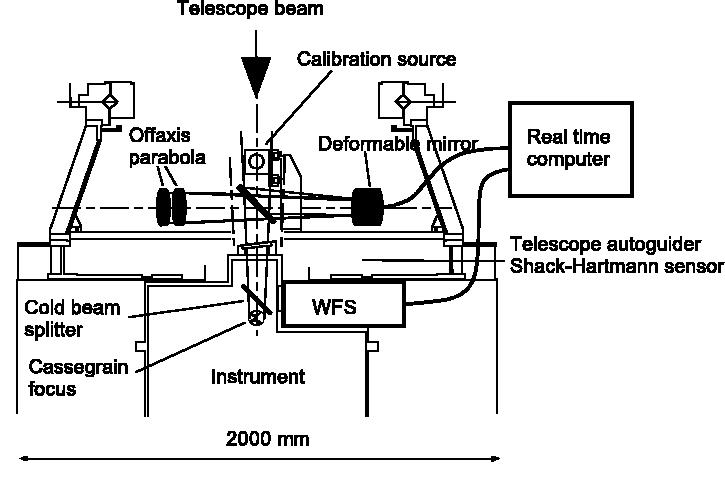
(This figure will be replaced by Oya-san's Figure 1)
AO Layer (AOL)
The AOL contains a bimorph deformable mirror and a separate tip-tilt mirror. The field of view of AOL is 2'. The deformable mirror is piezoelectrically driven by 36 bimorth control electrodes. The unit is permanently installed above the Cassegrain focus of the telescope. A pick-up mirror inserted in the telescope beam directs the beam to the AOL. The wavefront corrected beam is fed back to the Cassegrain focus by a mirror mounted on the backside of the pick-up mirror. By retracting this unit of mirrors, the telescope beam can directly go to the scientific instrument without changing a focal position or ratio.
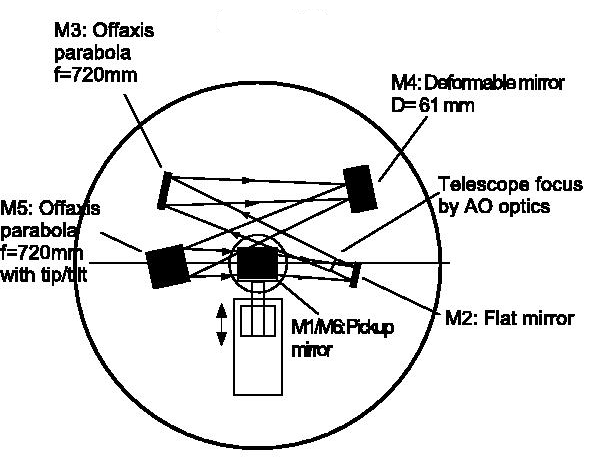
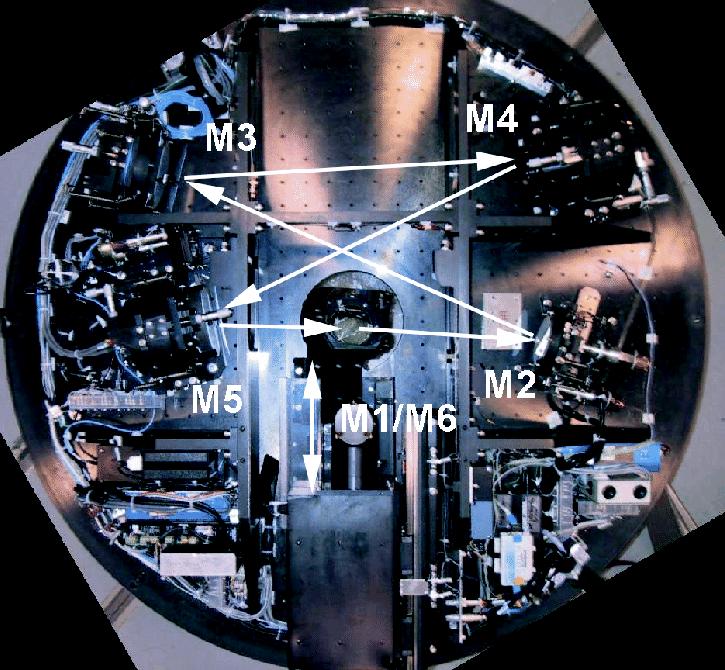
Wavefront Sensor (WFS)
The WFS contains guide star acquisition optics, 36 avalanche photodiodes (APDs) and CCD cameras for calibration and engineering. The unit is attached to a science instrument (CIAO or IRCS). The star acquisition optics has a field of view of 5''. For faint guide stars, FOV is reduced using an iris stop of variable aperture size to reduce the sky background. The scientific instrument (CIAO or IRCS) contains a cold dichroic mirror to direct the visible light to the WFS and the infrared to their cryogenic optics.
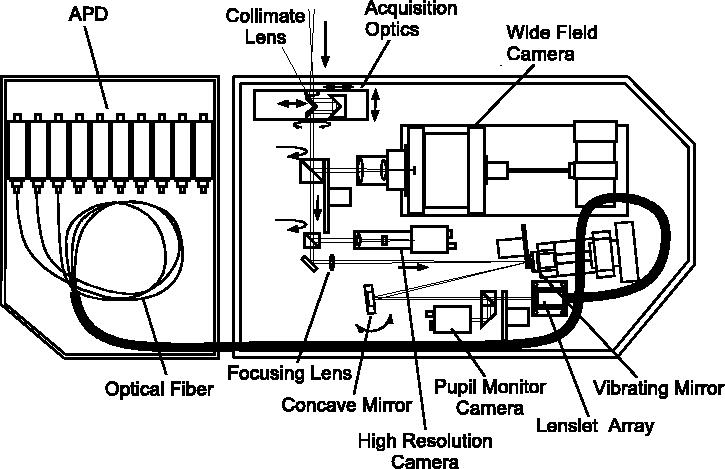
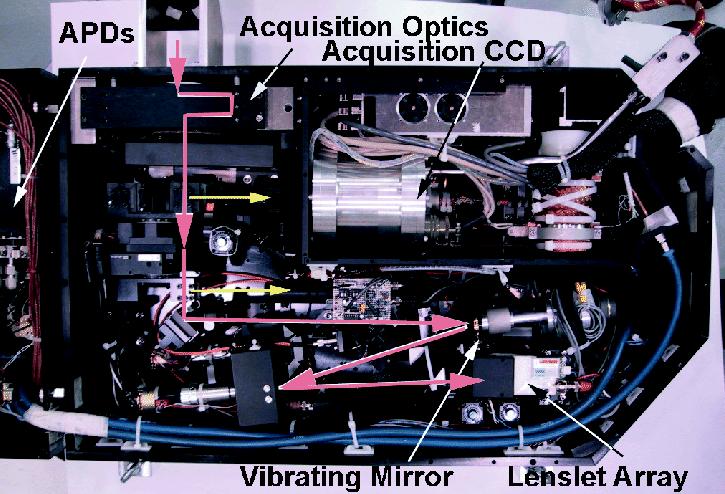
WFS of Subaru AO is based on curvature measurements of atmospheric turbulence. A low-order AO system allows for wavefront sensing more sensitive to a high-order AO, thereby allowing for use of fainter AO guide stars. Indeed, Subaru AO allows for wavefront correction with a guide star magnitude as faint as R=18.